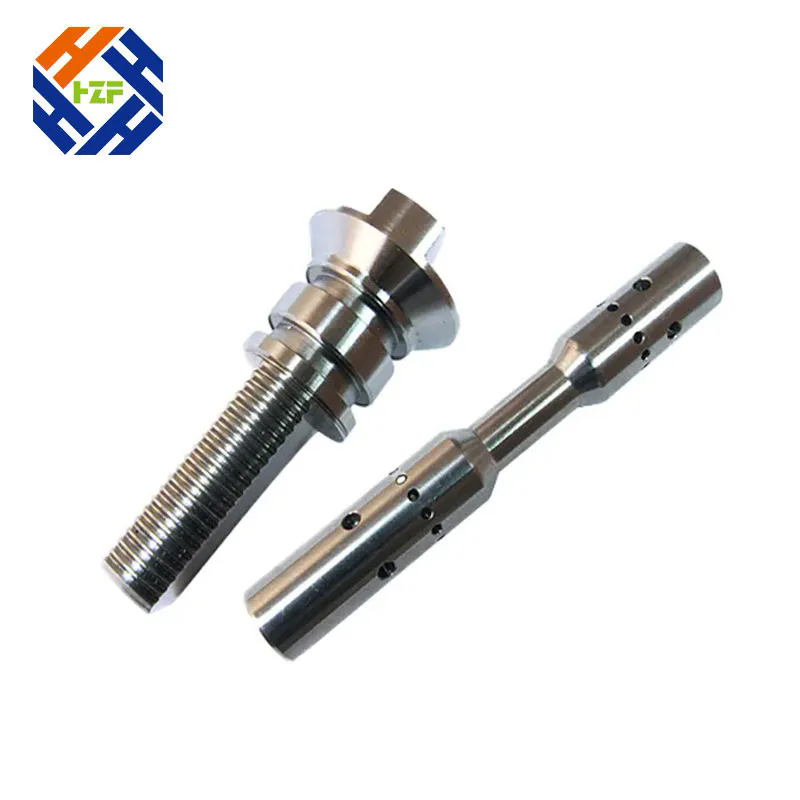The Role of CNC Machining in Crafting Motor Drone Parts: Precision, Performance, and Innovation
2024-08-23
As drones continue to revolutionize industries from agriculture to cinematography, the demand for high-quality, precision-engineered components is more critical than ever. Among these components, motor drone parts play a pivotal role in ensuring the performance, reliability, and longevity of unmanned aerial vehicles (UAVs). CNC machining has emerged as a crucial technology in the manufacturing of these parts, offering unparalleled precision, versatility, and efficiency. In this blog, we will explore how CNC machining is shaping the future of motor drone parts, its benefits, and the innovations driving this field.
What is CNC Machining?
CNC (Computer Numerical Control) machining is a manufacturing process that utilizes computer-controlled machine tools to produce parts with high precision and accuracy. The process involves the use of automated machinery to cut, drill, mill, and shape materials based on digital designs. CNC machining is known for its ability to produce complex geometries and tight tolerances with minimal human intervention.
Why CNC Machining is Essential for Motor Drone Parts
1. Precision and Accuracy: Motor drone parts, including rotors, stators, and housings, require exact dimensions and tolerances to function optimally. CNC machining provides the high precision needed to manufacture these components, ensuring that each part fits perfectly and performs as intended.
2. Complex Geometries: Drones often incorporate intricate and complex designs that traditional manufacturing methods may struggle to achieve. CNC machining can easily handle these complexities, allowing for the creation of sophisticated motor parts with detailed features and fine details.
3. Material Versatility: CNC machines can work with a wide range of materials, including metals like aluminum and titanium, as well as composites and plastics. This versatility allows for the production of motor drone parts from materials that offer the best balance of strength, weight, and durability.
4. Consistency and Reproducibility: CNC machining ensures consistent quality across multiple parts, which is crucial for maintaining the performance and reliability of drones. Once a design is programmed, it can be reproduced with identical specifications, reducing variability and ensuring uniformity.
5. Efficiency and Speed: The automated nature of CNC machining allows for rapid production of motor drone parts. This efficiency is particularly valuable in high-volume manufacturing scenarios, where quick turnaround times and cost-effective production are essential.
Key Motor Drone Parts Manufactured by CNC Machining
1. Motors: The heart of any drone, the motor, is responsible for generating the thrust needed for flight. CNC machining is used to create motor components such as housings, end caps, and mounting brackets with precise tolerances to ensure smooth operation and minimal vibration.
2. Propellers: Propellers are critical for controlling a drone's flight dynamics. CNC machining can produce high-performance propellers with intricate blade designs and exact pitch angles, contributing to optimal aerodynamic performance and stability.
3. Frames and Chassis: The frame of a drone provides structural support and houses all critical components. CNC machining allows for the creation of lightweight yet robust frames from materials like carbon fiber or aluminum, enhancing the drone’s durability and handling.
4. Gimbals: Gimbals are used to stabilize cameras and other payloads, ensuring smooth and steady footage. CNC machining can produce gimbal components with precise movements and minimal play, improving the quality of captured images and video.
5. Mounting Brackets and Adapters: Various mounting brackets and adapters are needed to secure components such as motors, cameras, and sensors to the drone's frame. CNC machining ensures that these parts fit perfectly and provide the necessary stability for reliable operation.
6. Heat Sinks: Effective thermal management is essential for drone performance, especially in high-power applications. CNC-machined heat sinks help dissipate heat generated by motors and electronic components, preventing overheating and maintaining optimal operating temperatures.
Innovations in CNC Machining for Motor Drone Parts
1. Advanced Materials: Innovations in materials, such as high-strength composites and lightweight alloys, are driving improvements in drone performance. CNC machining allows for precise shaping and finishing of these advanced materials, contributing to enhanced performance and durability.
2. Additive Manufacturing Integration: Combining CNC machining with additive manufacturing (3D printing) enables the production of complex geometries and custom designs that were previously challenging to achieve. This hybrid approach offers greater design flexibility and customization options for motor drone parts.
3. Smart Machining Techniques: Incorporating sensors and real-time monitoring into CNC machining processes allows for greater control and optimization. Smart machining techniques can detect issues such as tool wear or material inconsistencies, ensuring higher quality and reducing waste.
4. Automation and Robotics: The integration of robotics and automation in CNC machining facilities enhances production capabilities and efficiency. Automated loading and unloading systems, along with robotic arms, streamline the manufacturing process and increase throughput.
5. Precision Milling and Turning: Advances in precision milling and turning technologies enable the production of motor drone parts with even tighter tolerances and smoother finishes. These advancements contribute to improved performance and reliability of drone components.
Conclusion
CNC machining is a transformative technology that plays a crucial role in the production of motor drone parts. Its precision, versatility, and efficiency make it an ideal choice for manufacturing complex and high-performance components essential for modern drones. As the drone industry continues to evolve, CNC machining will remain at the forefront of innovation, driving advancements in materials, design, and manufacturing processes. Whether for consumer drones, commercial applications, or industrial use, CNC-machined motor drone parts offer the reliability and performance needed to push the boundaries of what drones can achieve.



